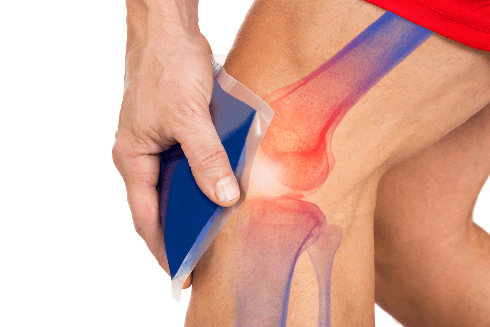Osteoarthritis is a disease that affects the joints. Healthy joints help your body move, bend and twist. Knees go up and down the stairs without cracking. The hips make you walk without complaining. But when you have osteoarthritis, these simple, everyday actions can hurt. Using the stairs can be painful. Walking a few steps, opening a door and even combing your hair can become complex. Here is everything you need to know about this disease.
What causes osteoarthritis?
The simplest way to describe osteoarthritis is its wear and tear on the cartilage of joints. This upholstery fabric is firm, thick and slippery. It covers and protects the ends of the bones where they meet to form a joint.
With arthritis, there are changes in the cartilage that cause it to break down. When it breaks down, the bones rub together and cause damage and pain. Experts do not know why this degradation of cartilage occurs. But aging, joint damage, overweight and genetics can be part of it.
Arthritis is primarily a disease of the spine, hip, hand, knee and foot. But it can also happen in other joints. A joint is the place where two bones connect. And you have them all over your body.
Arthritis is more common in older people. Even if you can't cure arthritis, there are many treatments that can help relieve your pain. And you can do something to prevent the damage from getting worse.
What are the symptoms?
- Pain. Your joints may hurt, or the pain may be burning or sharp.
- Rigidity. Getting up in the morning can be difficult. Your joints may feel stiff and creaky for a short time until you move.
- Muscle weakness. The muscles around the joint may become weakened. This often happens with arthritis in the knee.
- Deformed joints. Joints can start to look like bad form, especially as arthritis worsens.
- Reduced range of motion and loss of joint use. When your arthritis gets worse, you may not be able to bend, flex or extend your joints. Or you may not be able to use them at all.
- Cracking: Your joints may make cracking noises.
How is osteoarthritis diagnosed?
Your doctor will check to make sure your pain is not the result of another problem. He or she will ask questions about your symptoms, such as:
- Is the pain burning, sharp or acute?
- Are your joints stiff in the morning? If so, how long does the stiffness last?
- Do you have swollen joints?
If your joints are painful and swollen and your muscles are weak, this will also help your doctor determine if you have arthritis. You may also have x-rays to check your joints for damage. Your doctor may want to do blood tests or other tests to see if there are other causes of your pain.
How is it treated?
There are many treatments for osteoarthritisBut what works for someone else may not work for you. Work with your doctor to find out what is best for you.
Use pain medication
If your pain is mild, over-the-counter pain relievers such as acetaminophen and non-steroidal anti-inflammatory drugs (NSAIDs) may help. The most commonly used NSAIDs include ibuprofen and naproxen. But if these don't get rid of your pain, you may need a stronger prescription medication. Having medication shots in the joint also helps some people.
Use heat or ice on the painful joint

Heat can help you relax before an activity. Ice is a good painkiller after physical activity. Your doctor may give you gels or creams that you can rub on the joint to stop the pain.
Lose weight if you are overweight
Lose weight can be one of the best things you can do for your arthritis. This is to reduce the stress on your joints.
Exercise to strengthen your muscles

Having stronger thigh muscles, for example, can reduce the stress on your knees. Swimming, biking and walking are good activities. But be sure to talk to your doctor about the type of activity that is best for you. You can also get help from a physiotherapist.
Have recourse to surgery
If treatment does not relieve hip or knee pain, you may decide to havesurgery to replace the joint.
There are also some things you can do at home to support your symptoms. Certain devices and tools, for example, can take the stress and weight off your joints and make it easier for you to hold things. Door covers, tape, splints and canes can help.
You can also try changing your activities or the way you do things to reduce the stress on the painful joint and allow you to move better. Walk instead of jog. Or use a sewing machine to make a quilt instead of doing it by hand.
Other treatments to consider
- The band uses tape that adheres to the knee to hold the kneecap in place and relieve pain. But first, ask your doctor or physical therapist about the proper way to put it on.
- Capsaicin is a cream that you apply to your skin to ease pain.
- Pulsed electromagnetic field therapy uses magnets to produce an electrical pulse that can promote cartilage growth.
- Transcutaneous electrical nerve stimulation uses a gentle electric current to reduce pain.
Sources and references



